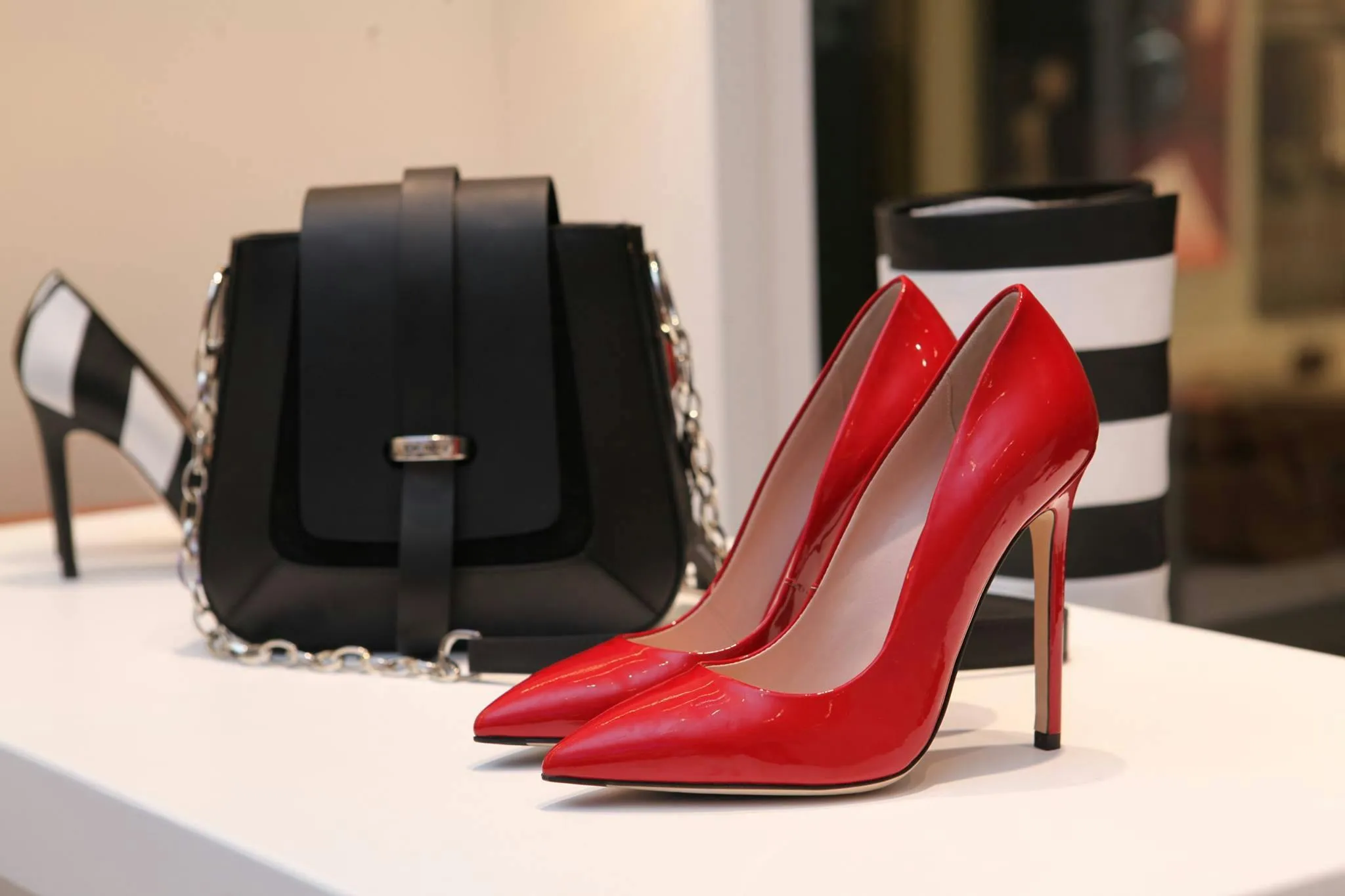You know that feeling when you're standing in front of your closet, completely overwhelmed by the idea of being "trendy"? 😅 Like, everyone else seems to effortlessly nail these fashion moments while you're still figuring out if skinny jeans are officially dead or not. Here's the thing - I used to think fashion trends were this exclusive club I'd never crack the code to, until I realized it's actually way simpler than the fashion industry wants us to believe.
Let me be real with you for a sec. Fashion trends don't have to be this stressful, expensive nightmare that leaves you feeling like you're constantly behind. What if I told you there's actually a foolproof way to stay current without breaking the bank or losing your mind? That's exactly what we're diving into today.
What Actually Makes Someone a Fashion-Trend Starter?
Before we get into the nitty-gritty, let's talk about what being a fashion-trend starter actually means. It's not about wearing the most expensive pieces or following every single micro-trend that pops up on your feed. Ngl, that approach will drive you absolutely crazy and drain your wallet faster than you can say "fast fashion."
A real fashion-trend starter is someone who understands the art of selective trend adoption. They pick and choose elements that work with their lifestyle, body, and budget. Think of it like curating a playlist - you don't need every single song, just the ones that make you feel amazing.
I've noticed that the most stylish people I know have this one thing in common: they're not trying to be walking billboards for every trend. Instead, they master the basics and then add trendy touches strategically. It's like having a solid foundation and then decorating with the fun stuff.
The Psychology Behind Fashion Trends
Here's something fascinating I discovered while researching this - Dr. Carolyn Mair, a cognitive psychologist who studies fashion psychology, found that our relationship with trends is deeply tied to our need for belonging and self-expression. We're literally wired to want to fit in while also standing out. Wild, right?
This explains why trend-chasing can feel so exhausting. You're constantly trying to balance these two competing desires. But once you understand this, you can work *with* your psychology instead of against it.
Building Your Trend Foundation
The secret sauce? Start with what I call the "trend-proof essentials." These are pieces that work regardless of what's happening in fashion right now. Think of them as your safety net - they'll always look good, even when trends shift.
Your foundation should include well-fitting jeans (yes, even if the style changes, good jeans never go out of style), a classic white button-down, a versatile blazer, comfortable sneakers, and a little black dress or sharp black pants. These aren't groundbreaking suggestions, but they're groundbreaking in their reliability.
The 80/20 Rule for Fashion Trends
This is where things get interesting. I follow what I call the 80/20 rule for trends. Eighty percent of your wardrobe should be those reliable essentials we just talked about. The remaining twenty percent? That's your playground for trends.
This approach takes all the pressure off. You're not overhauling your entire closet every season. Instead, you're adding strategic pieces that feel fresh and current. Maybe it's a trendy bag one season, statement earrings the next, or a bold lip color that everyone's talking about.
Btw, this rule also works amazingly well for your budget. You're investing in quality basics that last years, and only spending trend money on smaller, less expensive pieces that you won't feel guilty about when they go out of style.
Trend Timing: When to Jump In
Not all trends are created equal, and timing matters more than you might think. I've learned to wait and watch before diving into any new trend. If something is still being talked about after three months, it's probably worth considering. If it disappears from your feed in two weeks? You dodged a bullet.
Research from fashion forecasting company WGSN shows that successful trends typically have a 6-month minimum lifespan in mainstream fashion. This gives you plenty of time to observe, decide, and shop smartly without feeling rushed.
Your Zero-Stress Trend Shopping Strategy
Shopping for trends doesn't have to feel like a high-stakes game. Here's my foolproof approach that takes all the anxiety out of it.
First, make friends with your phone's screenshot function. When you see something you love, screenshot it. Don't buy it immediately. I keep a "maybe" folder and review it monthly. You'd be amazed how many things you thought you "needed" suddenly don't feel so urgent after a few weeks.
Second, try the "three ways test." Before buying any trendy piece, think of three different ways you could style it with things you already own. If you can't come up with three, put it back. This ensures everything you buy actually integrates with your existing wardrobe instead of becoming an expensive closet orphan.
Budget-Friendly Trend Testing
You don't need to spend a fortune to test drive trends. Some of my favorite trend pieces came from affordable retailers, thrift stores, or even borrowed from friends. The goal is to see how a trend feels in your real life before committing serious money to it.
Accessories are your best friend here. A trendy scarf, belt, or piece of jewelry can completely update a basic outfit without breaking the bank. Plus, if the trend doesn't stick around, you're not out a ton of money.
Reading the Trend Landscape
Learning to spot which trends have staying power vs. which ones are just flash-in-the-pan moments is honestly a game-changer. There are some telltale signs I look for now.
Trends with staying power usually solve a real problem or fulfill a genuine need. Think athleisure - it stuck around because people actually wanted comfortable clothes that looked put-together. Or the move toward sustainable fashion - it's not going anywhere because it addresses real concerns people have.
Flash trends, on the other hand, are usually just about shock value or social media moments. They're fun to look at, but they don't integrate well into real life. Trust your gut on these - if you can't imagine wearing something to run errands or meet friends for coffee, it's probably not worth your money.
Social Media vs. Real Life Fashion
Let's talk about the elephant in the room - social media has completely changed how we think about fashion trends. What looks amazing in a carefully curated Instagram post might feel completely ridiculous when you're trying to live your actual life.
I've started asking myself: "Would I feel comfortable wearing this to the grocery store?" If the answer is no, I probably shouldn't buy it. Real style is about feeling confident and comfortable in your clothes, not just looking good in photos.
Seasonal Trend Navigation
Each season brings its own set of trends, and tbh, it can feel overwhelming trying to keep up. But here's what I've learned - you don't need to participate in every seasonal trend shift. Pick one or two elements that genuinely excite you and ignore the rest.
Spring might bring bright colors and floral prints. Summer could be all about flowy fabrics and statement sandals. Fall usually introduces new textures and layering opportunities. Winter often focuses on outerwear and cozy accessories. Choose your battles based on what actually fits your lifestyle and climate.
Building a Trend Calendar
This might sound super organized, but having a loose trend calendar has saved me so much money and stress. I note when major fashion weeks happen, when retailers typically introduce new collections, and when end-of-season sales start.
This helps me time my purchases better. I'm not panic-buying full-price items at the beginning of a season when I know they'll likely go on sale in a few months. Plus, it gives me time to really think about whether I want something before committing to it.
Frequently Asked Questions
How do I know if a trend will work for my body type?
Honestly, the whole "body type" thing is pretty outdated thinking. The better question is: does this trend make you feel confident and comfortable? Try things on, take photos from different angles, and trust how you feel in the clothes. Your comfort and confidence matter way more than following arbitrary rules about what you "should" wear.
What if I buy something trendy and it goes out of style quickly?
First, remember that 20% rule we talked about - you're only spending trend money on a small portion of your wardrobe. Second, focus on trendy pieces that can be styled in classic ways. A trendy print in a classic silhouette, for example, has more longevity than a trendy silhouette in a basic color.
How can I stay current without looking like I'm trying too hard?
The key is subtlety and authenticity. Choose trends that genuinely appeal to you, not ones you think you should like. Incorporate trendy elements gradually rather than doing a complete style overhaul. And remember - confidence is the best accessory you can wear.
Should I follow fashion influencers for trend inspiration?
Follow people whose style you genuinely admire and whose lifestyle seems similar to yours. But remember that influencers often have very different needs than regular people - they might prioritize photo-ready looks over practical, everyday wear. Use their content as inspiration, not instruction.
How do I build a trendy wardrobe on a tight budget?
Focus on accessories first - they're the most affordable way to try trends. Shop your own closet and see how you can restyle existing pieces in new ways. Take advantage of end-of-season sales, and don't overlook secondhand options. Sometimes the best trend pieces are vintage finds that feel fresh again.
Making Trends Work for Your Real Life
At the end of the day, fashion trends should enhance your life, not complicate it. The best trend adoption happens when you're honest about your lifestyle, budget, and personal preferences.
If you work in a conservative office, maybe your trend expression happens through accessories or weekend wear. If you're a busy parent, perhaps you focus on comfortable trends that still look polished. If you're on a tight budget, you might concentrate on one or two key pieces per season rather than trying to keep up with everything.
The fashion industry wants us to believe that we need to constantly consume new things to stay relevant. But the most stylish people I know have figured out how to make trends work for them, not the other way around.
Creating Your Personal Trend Filter
Developing your own trend filter is probably the most valuable skill you can build. Ask yourself: Does this trend align with my lifestyle? Will I actually wear this more than once? Does it make me feel like myself, just elevated?
Your trend filter should also consider practical factors. Do you have the right undergarments for this trend? Does it work with your climate? Can you care for it properly? These might seem like boring questions, but they'll save you from a lot of regrettable purchases.
Bottom Line
Building your fashion-trend starter pack doesn't have to be stressful or expensive. It's really about understanding yourself, being strategic with your choices, and remembering that the best trends are the ones that make you feel amazing. 💫
Start with those solid basics, add trendy touches thoughtfully, and trust your instincts. Fashion should be fun, not anxiety-inducing. You've got this - and imo, the confidence that comes from knowing you look good in what you're wearing? That never goes out of style.




